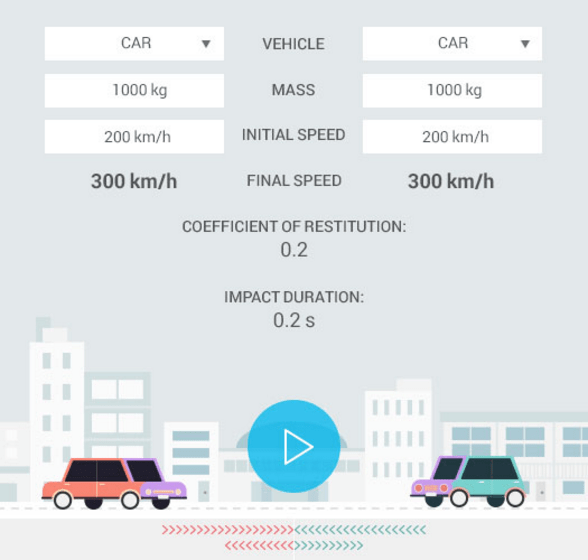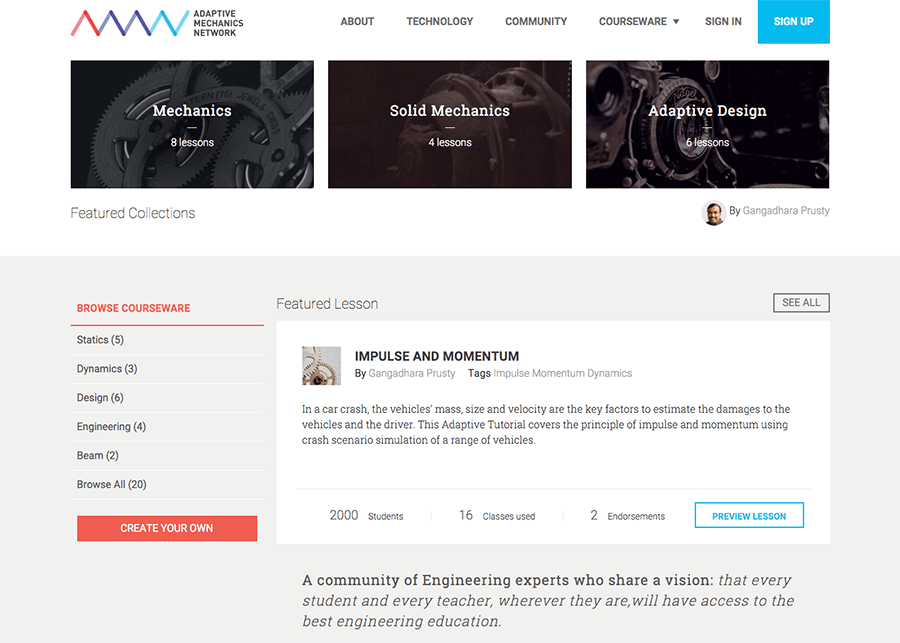The Challenge
In 2007, University of New South Wales Professor Ganga Prusty inherited a course in first year engineering mechanics that had a 31% failure rate. That’s not only millions of dollars in potential tuition loss, but hundreds of students that wouldn’t live up to their dreams of becoming engineers in an economy starved for STEM graduates.
The Solution
Ganga and his team worked with Smart Sparrow to identify problems, honing in on “Threshold Concepts” that students consistently struggled to understand. Together, we designed 4 initial Adaptive Tutorials on the Smart Sparrow Platform. They feature interactive simulations, applied adaptive feedback and pathways, and they’re typically deployed as homework via the course’s LMS page.
These Adaptive Tutorials are interactive and highly engaging and provide students with a personalized learning experience that adapt the instruction level to the students’ level of understanding. These Adaptive Tutorials have been shown to significantly improve student learning and reduce failure rate.

The Results
The Adaptive Tutorials have been a success. Students enjoy them and (more importantly) they perform better in the engineering mechanics course. Ganga’s team uses Smart Sparrow Analytics to continuously monitor and improve the Adaptive Tutorials, and they have since created more tutorials, which are available to use from the Adaptive Mechanics Network.
In the six years since the first deployment of the Adaptive Tutorials, Ganga has reduced the course failure rate to 5% — a 77% decrease — and increased the high distinction (equivalent to an ‘A’ letter grade) rate to 18% — a 350% increase. No one loves homework, but when it’s engaging and adaptive, you learn better.
Throughout UNSW, faculty have now created great adaptive courses in aerospace engineering, chemistry, statistics, biotechnology and biomolecular sciences, pathology, physiology, and more.
The Beginning of a Teaching Network
Today, the Adaptive Mechanics Teaching Network, inspired by Prusty’s work and his successful pilot of Adaptive Tutorials in his mechanics course, represents a collaboration between 7 leading universities that have created a full suite of Adaptive Tutorials that instructors anywhere can use to teach key threshold concepts in first year mechanics.
Adaptive Tutorials exist on the topics of mechanics, solid mechanics, adaptive design, statistics, dynamics, design, engineering, and beam.
The Teaching Network has been was subsequently expanded to a Community of Practice project with the support of the Australian Learning & Teaching Council (ALTC).
See Adaptive Tutorials available for use at adaptivemechanics.edu.au.

Using Adaptive Tutorials in a MOOC
Professor Ganga Prusty, Retired A/Professor Robin Ford, and the Learning & Teaching Design and Development Services at UNSW Australia created a MOOC course, Through Engineers’ Eyes: Engineering Mechanics by Experiment, Analysis and Design, to teach fundamental engineering principles using Adaptive Tutorials. The team understood the common challenges that come with teaching MOOC courses, and they committed to cycles of continuous improvement after every deployment. The Adaptive Tutorials offer a personalized learning experience for each student, in an environment that is typically one-size-fits-all learning for thousands of people.
Through Engineers’ Eyes was taught for the first time in April 2016, with over 7,000 students from more than 100 countries. It was taught for the second time September 2016 with more than 5,000 student enrolled.
Students were given an end-of-course survey to share their thoughts on the effectiveness of learning with MOOCs and Adaptive Tutorials. Participant survey responses indicated:
- 92% said that in a course like this they prefer interesting material, even if it’s difficult to learn.
- 85% said the adaptive tutorials were useful to apply the concepts.
- 85% said the adaptive tutorials helped them to evaluate their learning effectively.
- 66% said the adaptive tutorials were effective as a learning activity.
- 66% said the material was presented in an engaging manner.
Prof. Prusty is an active researcher in the field of Learning Innovation. In 2016, his paper, Through Engineers’ Eyes: a MOOC Experiment, won best paper at the AAEE Conference. Read the full paper here.

